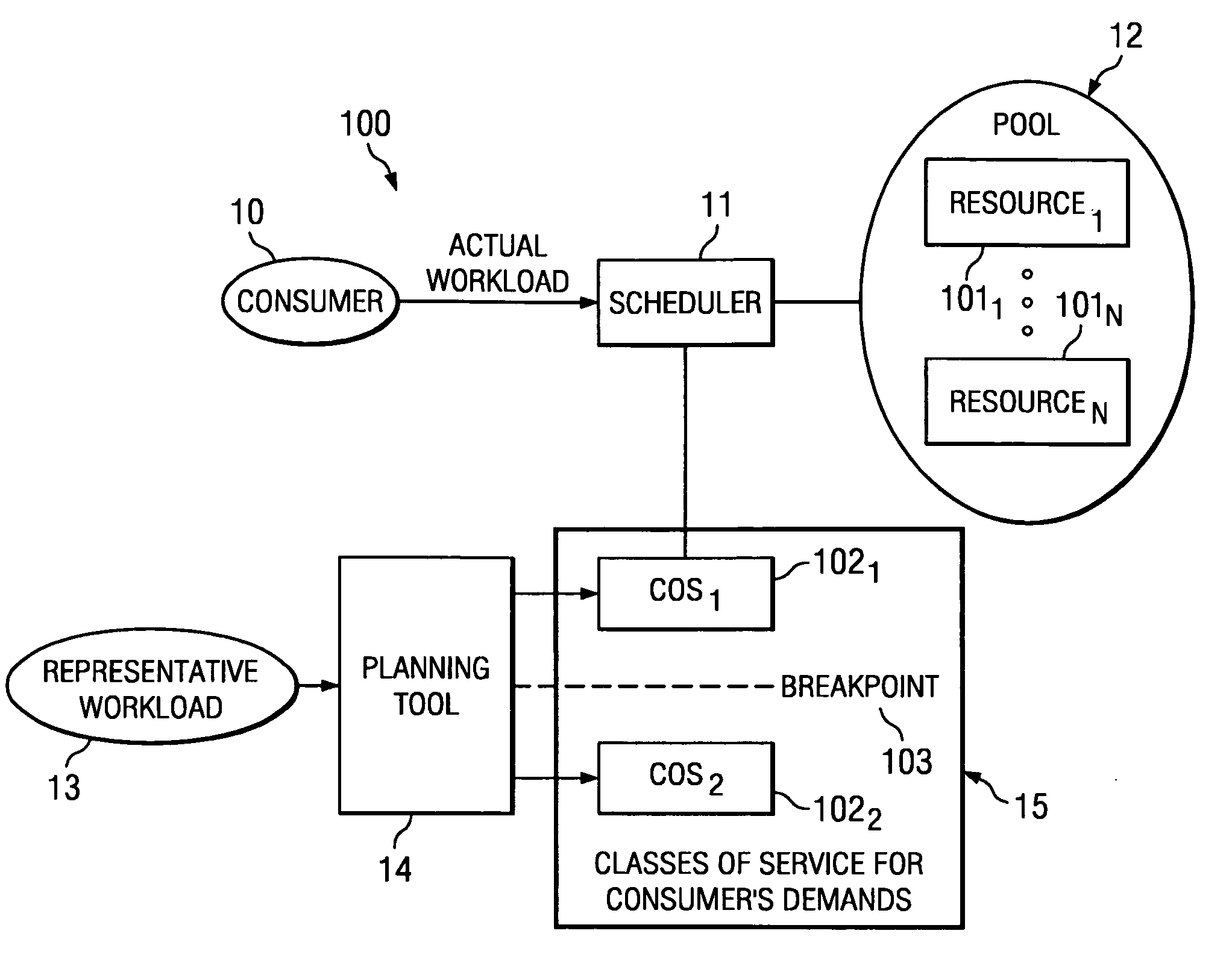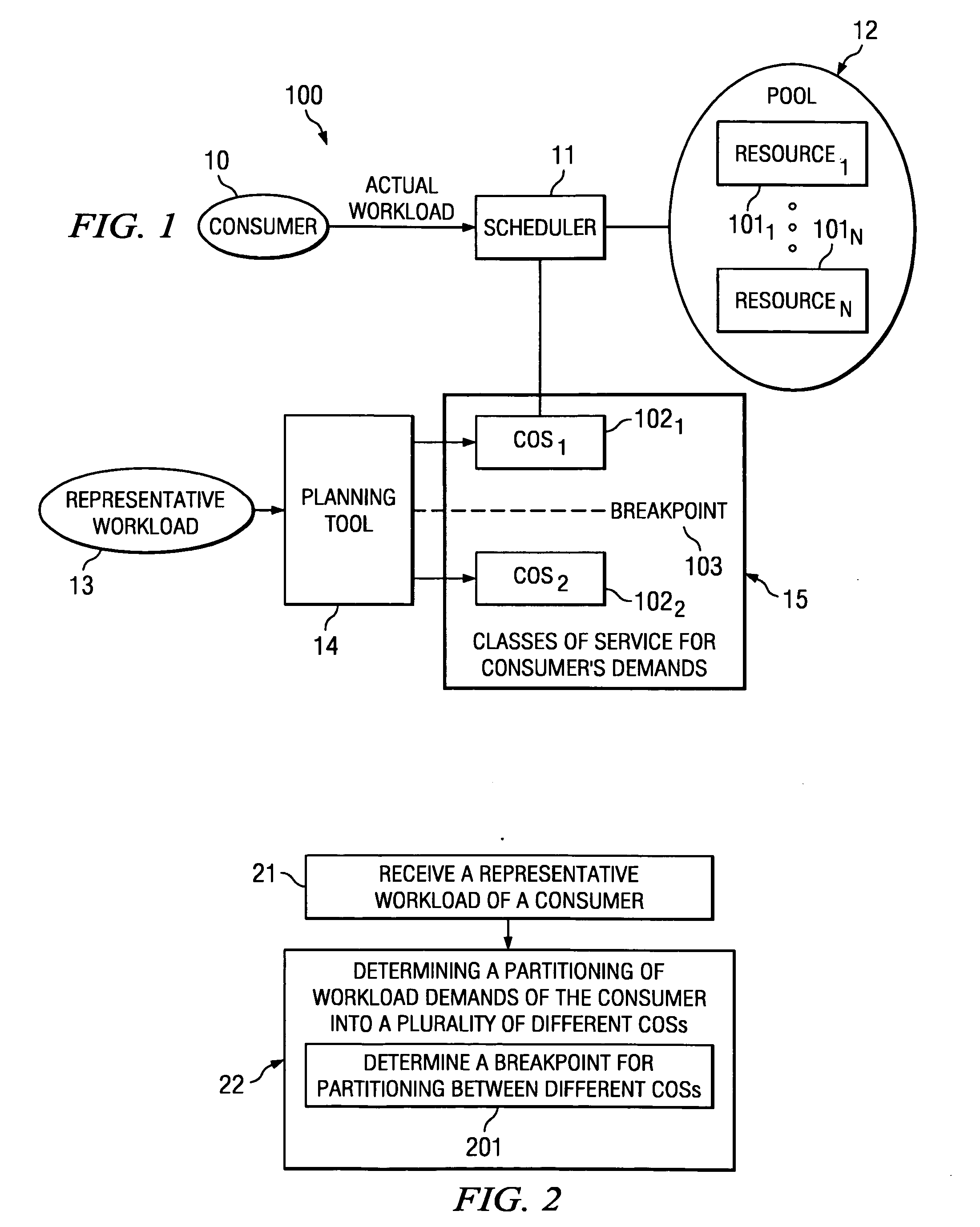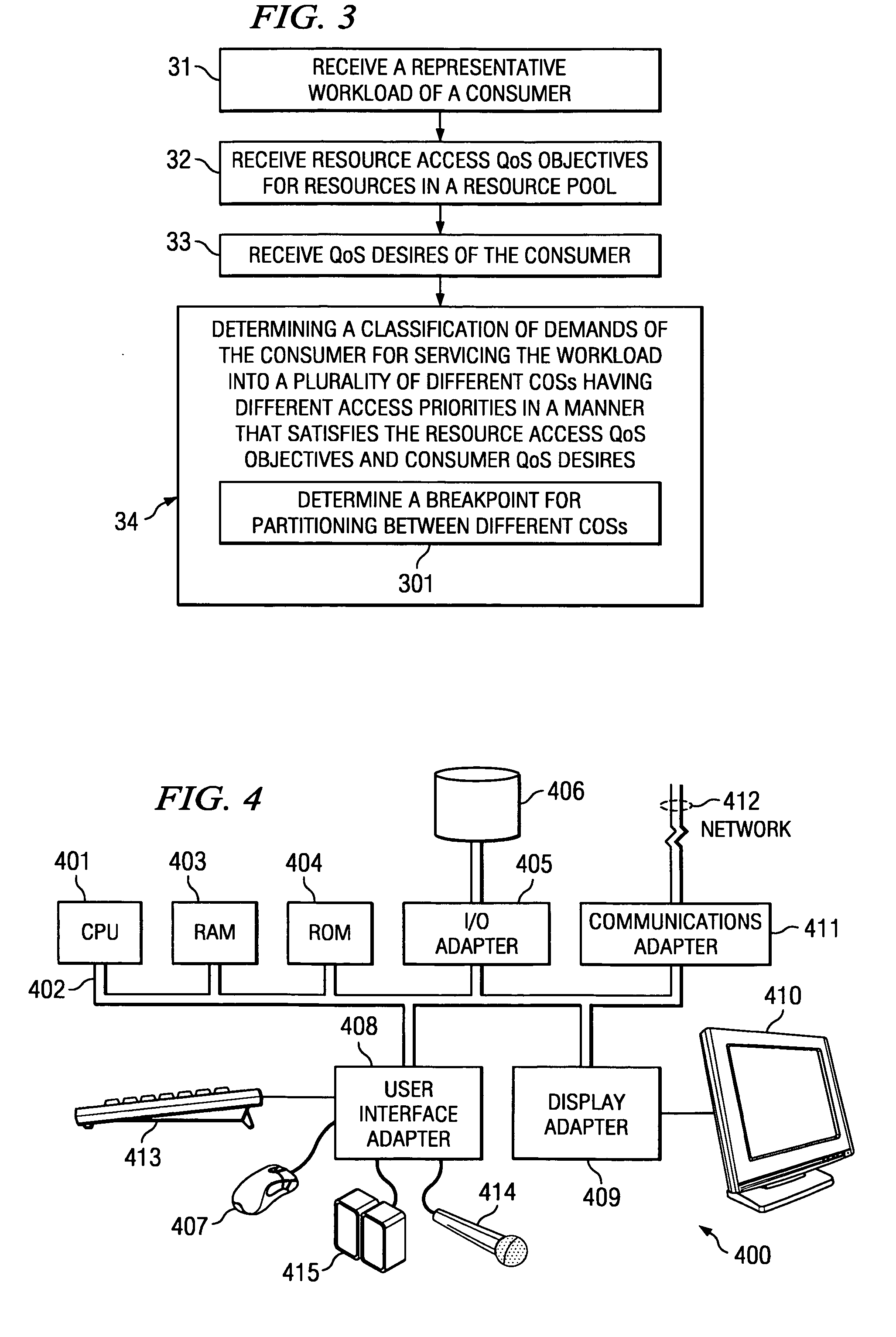System and method for determining a partition of a consumer's resource access demands between a plurality of different classes of service
a technology for consumers and resource access, applied in the field of managing access to resources, can solve the problems of reducing the allocation of resource pool's capacity to such workloads, leaving the remaining consumers with insufficient capacity to support their respective workloads, and generally consuming capacity for serving the consumer's workload
- Summary
- Abstract
- Description
- Claims
- Application Information
AI Technical Summary
Problems solved by technology
Method used
Image
Examples
Embodiment Construction
[0015]FIG. 1 shows an exemplary system 100 employing one embodiment of the present invention. System 100 includes planning tool 14 that is operable to evaluate a consumer 10's workload 13 and determine a proper classification of the consumer 10's demands among a plurality of different COSs 15, such as COS1 1021 and COS2 1022 in the illustrated example. That is, planning tool 14 is operable to determine a breakpoint 103 for dividing resource demands of consumer 10 between COS1 1021 and COS2 1022. As described further below, in certain embodiments, planning tool 14 also receives resource access QoS objectives for resources in a resource pool and QoS desires of a consumer, and uses this information in analyzing the consumer's workload 13 to classify the consumer's demands among the COSs in a manner that will satisfy the resource access QoS objectives and consumer's QoS desires.
[0016] In certain embodiments, scheduler 11 provides guaranteed access to resources for servicing the demands...
PUM
 Login to View More
Login to View More Abstract
Description
Claims
Application Information
 Login to View More
Login to View More - R&D
- Intellectual Property
- Life Sciences
- Materials
- Tech Scout
- Unparalleled Data Quality
- Higher Quality Content
- 60% Fewer Hallucinations
Browse by: Latest US Patents, China's latest patents, Technical Efficacy Thesaurus, Application Domain, Technology Topic, Popular Technical Reports.
© 2025 PatSnap. All rights reserved.Legal|Privacy policy|Modern Slavery Act Transparency Statement|Sitemap|About US| Contact US: help@patsnap.com



